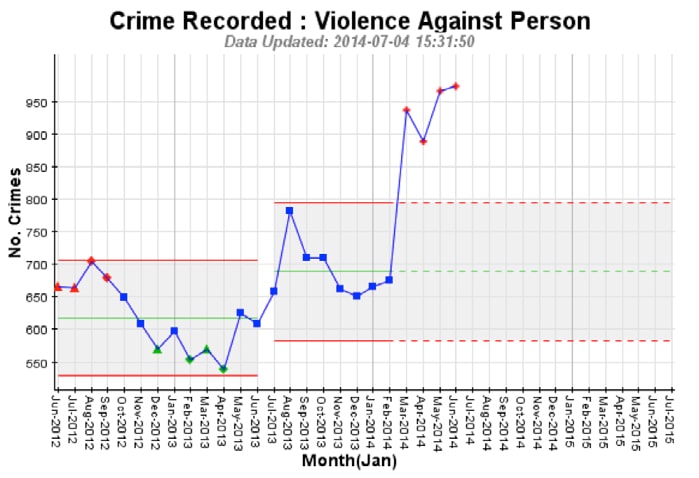

Proactive policing has always been important in the area of violent crime, but with limited resources, deciding where and when to place those resources for maximum effect can be difficult. Several police forces have used sfn to determine the best corrective action to avoid violent crime.
A number of forces, both rural and metropolitan, reported an increase in violence. But it was important to determine whether this was a real increase, or whether it was merely a symptom of changes to the way violent crimes were reported.
Analysing the data within sfn, it became apparent that although changes to reporting had affected the numbers, there was still an underlying increase in violent crime. One rural force showed a marked increase against the previous two years – using sfn to compare the figure against 10 years’ worth of data showed that there had been a seasonal downward trend which had been broken because of real increases in violence. This was corroborated by the experience of the officer with responsibility for reducing violent crime.
In a larger force with a mix of rural areas and four main cities, Violence Against the Person had been rising. On further analysis, the main driver for this was the night-time economy of one of the cities in the force’s patch. In fact, the main driver was narrowed down to a specific area in the particular city at a particular time period in the day – at this point, corrective action was taken to limit any further increases and bring the volumes back down to previous levels and below.
The forces working with Lightfoot and sfn have found that:
We have reviewed data from across multiple forces to produce an insights report.
